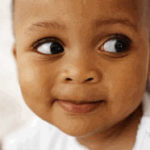 When referring to toddlers , what is the true definition?
When referring to toddlers , what is the true definition?
A child who is learning to walk and is unable to walk well, –toddles , and thus the name “Toddler”
The age of a toddler extends from 13 months to 36 months. In the U.K. it extends to 4 years. Once a toddler is 3+ years, many refer to them as pre-schoolers
These are but a few toddler issues to address.
Bedwetting and Urinary Problems
Nocturnal enuresis or bedwetting may be seen in children over the age of 6 and up until age 12 (and then sometimes beyond). Often parents are concerned that their 3 or 4 year old is wetting the bed. Remember that kids who are newly toilet-trained still have difficulty with their central control. There is nothing wrong with them. This is why they may still have accidents during the day, and certainly at night. My initial approach is to make sure that there is no underlying pathology. This is usually indicated in toddlers who have been dry and accident-free for many months and are suddenly wet all the time. A urinary sample should be analyzed for pus and blood and then sent for culture and sensitivity. If the sample shows signs of infection, this should be treated, and the child should be assessed for underlying causes such as congenital renal or bladder problems. Other systemic disease such as diabetes should be excluded. A common cause of frequent urination without an obvious cause is due to what I call high-soap concentration baths. Perhaps your 3-year-old has a bubble bath she enjoys every night with a fish-shaped bar of soap she chases for 30 minutes in the tub. This high concentration of soap can cause a chemical irritation to the urethra (urethritis) resulting in an acute onset of burning with urination and frequent urination (called frequency). The treatment is simple—turf all the bubbles and soap. Do not wash the perineal area (including the penis or vagina) with soap. It’s unnecessary. Just a simple wash with cloth and water is all that is needed for perineal care. If your child is only having problems at night, some of the measures that you can try initially are to restrict fluids in the evening, especially 2 to 3 hours prior to bed. Also, pee your child before you turn in for the night. If, in spite of this, consistent urinary incontinence continues, further tests may be warranted.
Making Strange
A baby makes strange when she suddenly notices that the person she is looking at is not familiar to her. She gets that look on her face and starts to cry. The look we are talking about is the vacant look with a frown. Her eyes then dart back towards the familiar face and she often pouts before she cries. She will sometimes try to get away, even though she is too young to physically take off. Parents are often concerned about this behaviour, but making strange is actually a good thing. First it shows that your baby recognizes a stranger even if it’s Grandpa. It also reassures us that the baby is bonded with his parents. If at 9 months a baby is happy to climb into my arms and has no second thoughts about allowing me to carry him out of the examining room, then I have concerns that he has an attachment disorder. This is something that we recognize in infants from orphanages. As a result of neglect, they detach emotionally and have great difficulty attaching to a parent.
Temper Tantrums
A normal aspect of child development is about to surface— temper tantrums. They begin when your child is about 1 year old, worsen at 2 and are completed, we hope, by the time your child is 3 years old. Older children will use this behaviour if it has worked for them in the past. Temper tantrums are the result of frustration. They occur if a child is unable to get something. This often starts out innocently with a toddler resisting something that she either does not understand, or understands but is unable to express. They also occur in toddlers who are testing out their independence only to find out that there are constraints to what they can and cannot do. Some tactics may be used to avoid tantrums, and these may include: Reward your child with attention for positive behaviour. Give her some control over little things by giving choices.
Make those off-limit objects disappear: out of sight, out of mind. Set the stage for success when your child is playing or mastering a new task. Choose your battles and accommodate when you can but within reason. Know your child’s limits. Communicate. In the heat of a tantrum, here are some good tactics: Keep cool. If you lose your cool, the tantrum often escalates. If you show frustration, you’ll only complicate the problem. Kids know if you are frustrated. Physical tactics send a message that force and physical punishment is okay. Instead, have enough self-control for both of you. Lead by example. Try to understand your child’s side. Use distraction as a technique. After the tantrum: Sometimes a child needs to have help or guidance to settle down in the midst of the tantrum. Never reward a child after a tantrum by giving in. Rather praise her for regaining control. This is the time to let her know that you love her no matter what. You need to take the problem to a health professional under the following circumstances: When the tantrums are getting worse, not better. If the child is a threat to herself or to those around her. If the tantrum is evoking feelings from caregivers that result in a negative physical or mental impact on the child. If your child is in danger of hurting herself or others during a tantrum, remove her to a quiet, safe, place to calm down. This also applies to tantrums in public places.
Milestones
Your baby has so many things to learn; these occur in the form of physical and mental/psychological development. We always gauge babies according to their expected milestones; often we compare our child to others. Sometimes the comparisons do not tell us much and other times they can indicate that there is a motor or learning problem. Always make a note of these concerns for your doctor so that this issue can be dealt with. Often, the apparent problem is not in fact a problem, because each baby has a definite development timeline that he follows, and this is not always according to the book. Remember too that premature babies are often delayed in their milestones. Some things that your baby should be doing are the following:
At 1 month, he focuses/gazes, he startles to loud or sudden noises, he has established a good suck; At 2 months, he follows movement with his eyes, he has a variety of sounds and cries, he holds his head up when held at an adult’s shoulder, he enjoys being touched and cuddled; At 4 months, he turns his head toward sounds, he laughs/ squeals at his parents, his head is steady, he grasps/reaches; At 6 months, he follows a moving object, he responds to his own name, he babbles, he rolls from his back to his stomach, or from stomach to back, he sits with support, he brings hands and toys to his mouth; At 9 months, he looks for hidden toys, he babbles different sounds and to get attention, he sits without support, he opposes thumb and index finger, he reaches to be picked up and held; At 12 to 13 months, he understands simple requests, e.g., find your shoes, he chatters using 3 different sounds, he crawls or bum shuffles, he pulls to stand/walks holding on, he shows many emotions; At 18 months, he points to pictures (e.g., show me the cow) and to 3 different body parts, he says at least five words, he picks up and eats finger foods, he walks alone, he stacks at least 3 blocks, he shows affection, he points to show his parents something, he looks at you when talking/playing together; At 2 years, he has at least 1 new word a week, he uses 2-word sentences, he tries to run, he puts objects into small containers, he copies adults’ actions, he continues to develop new skills.





